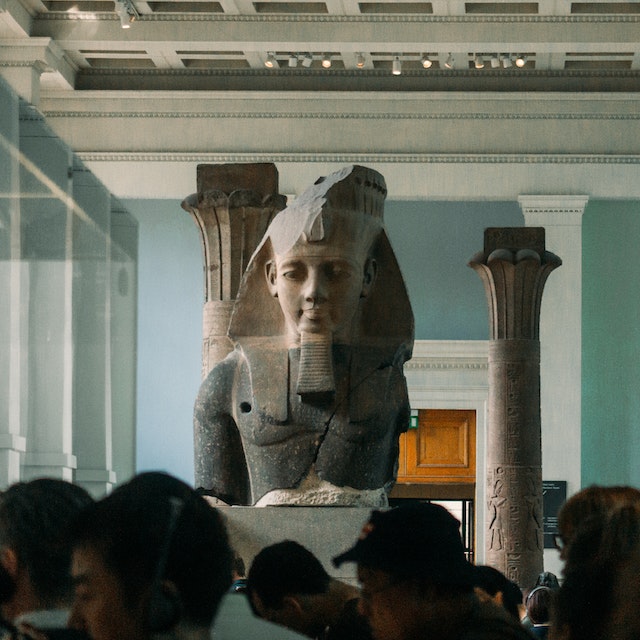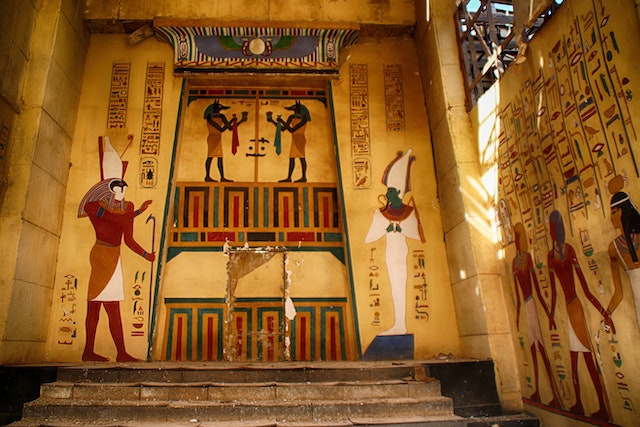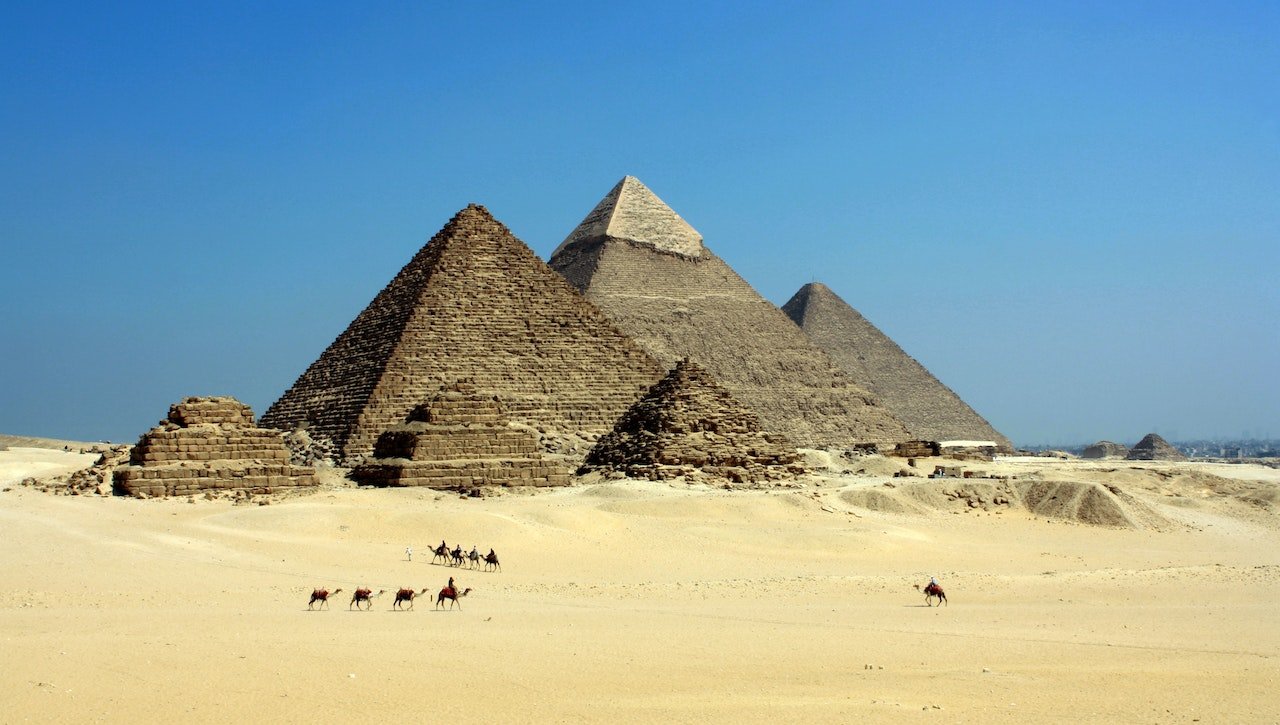
Egyptian mythology is filled with fascinating tales of gods, goddesses, monsters, and extraordinary creatures.
This ancient religion has been around for over 5,000 years, influencing various cultures throughout history.
It includes stories about the creation of the world and its inhabitants, as well as tales of kings and heroes.
In this article, you can learn some interesting facts about Egyptian mythology and its role in society.
From the gods of chaos to the goddesses of fertility, you will come away with a better understanding of this mysterious and powerful belief system.
Fact #1: Ra is the Most Worshiped God
Ra is the ancient Egyptian sun god, often depicted as a falcon-headed man. He was seen as the creator of all life and the ruler of both gods and men.
In some accounts, he is even said to have created himself. Ra was believed to be the most powerful god in Egypt and was one of the most worshiped gods in all of Egyptian mythology.
He was often referred to as the “King of the Gods,” and each day, he traversed across the sky in his solar boat, providing Egyptians with light and warmth.
Ra also represented order and justice, and many temples were constructed in his honor throughout Egypt.
Every morning, priests would offer sacrifices and prayers to him at sunrise.
To this day, Ra remains a powerful figure in Egyptian mythology and culture.
- Read also: How Did Cleopatra Die
- Read also: How Old Are the Pyramids
Fact #2: Osiris is the God of Death
Osiris is one of the oldest gods in Egyptian mythology and is associated with death, fertility, and resurrection.
He was the son of Geb and Nut, two of the most important deities in Egypt.
According to the myth, he was murdered by his brother Set and dismembered into several pieces that were scattered across Egypt.
His wife, Isis, was able to find all the pieces of his body and put them back together, allowing Osiris to be resurrected.
As a result of this myth, Osiris is associated with death and the afterlife.
He is believed to judge the souls of those who have passed away and usher them into their eternal resting place.
In some stories, he is even said to have been the first Pharaoh, ruling over Egypt in the underworld. Osiris is still a major figure in Egyptian mythology today and continues to be widely worshiped by many.
Fact #3: Thoth is the God of Wisdom
Thoth is another important god in Egyptian mythology, associated with wisdom and knowledge.
He was often depicted as an ibis-headed man wearing a headdress with two moons on it.
Thoth was said to be the god of writing and communication, credited for inventing hieroglyphics and giving them to humans so that they could record their knowledge.
He was also the god of law and order, believed to be a mediator who kept the gods in line with their duties.
Thoth was thought to be so wise that he could solve any riddle or dispute among the gods and humans alike.
His wisdom extended beyond death as well, granting him the power to guide souls into the afterlife. He was even said to have helped Isis resurrect Osiris after his death.
To this day, Thoth remains an important figure in Egyptian mythology, representing intelligence and wisdom.
Fact #4: The Pharaohs Were Seen as Gods

The Pharaohs of Ancient Egypt were thought to be divine rulers, descended from gods.
According to legend, the first Pharaoh was Horus, a sky god who became king after avenging his father’s death.
The Pharaohs were seen as living gods on earth and held great power over their people. It was believed that they were chosen by the gods to lead and protect the people of Egypt.
As a result, many Pharaohs built temples in honor of their gods and used the power of religion to help maintain control over their subjects.
The Pharaohs were held in such high regard that even after death, they were mummified and buried with great wealth in elaborate tombs.
This practice was meant to ensure that even in death, the Pharaohs would remain close to their gods and be able to join them in the afterlife.
Fact #5: Anubis is the God of Embalming
Anubis was a jackal-headed god in Egyptian mythology associated with embalming and mummification.
He was said to guard the entrance to the underworld, where he would protect the deceased from evil forces and ensure that they reached their final resting place safely.
Anubis was believed to have created the practice of mummification and was often depicted supervising the process.
He was also said to be in charge of the weighing of souls, using a giant scale to determine whether they were worthy of entering the afterlife.
Anubis is still revered today as the god of death and his image is seen on many tombs throughout Egypt.
Fact #6: Hathor is the Goddess of Joy and Fertility
Hathor was a goddess in Ancient Egypt associated with joy, fertility, and motherhood.
She was often depicted as a woman with cow horns or ears, symbolizing her role as the goddess of cows.
Hathor was said to have been the daughter of Ra, one of the most important gods in the Egyptian pantheon.
She was believed to bring joy and fertility to the land, as well as watch over mothers and newborns.
Hathor was also associated with music and dance, often being depicted playing the sistrum or singing and dancing with other goddesses.
Her cult was widespread throughout Egypt and she still remains an important figure in Egyptian mythology today.
Fact #7: Sekhmet is the Goddess of War and Protection

Sekhmet was a lion-headed goddess in Ancient Egypt associated with war, protection, and vengeance.
She was said to be the daughter of Ra and had the power to both protect and destroy her enemies.
In battle, Sekhmet was said to breathe fire and bring destruction with her arrows.
She was also believed to have the power to protect her people, watching over them in times of danger and shielding them from harm.
Sekhmet remains an important figure in Egyptian mythology today, embodying strength and protection.
Fact #8: The Nile Was the Lifeblood of Ancient Egypt
The Nile was the lifeblood of Ancient Egypt, providing food, transportation, and protection for the people of the land.
It was seen as a symbol of fertility and rebirth and was worshipped by many gods in Egyptian mythology.
The river served as an important source of water for crops and kept the land fertile, allowing it to flourish and grow.
The Nile was also a major trade route and transportation system, connecting Egypt to the wider world.
Without it, Ancient Egypt would not have been able to develop into the powerful civilization that it was.
Fact #9: Isis is the Goddess of Magic and Healing
Isis was a goddess in Ancient Egypt associated with magic, healing, and protection.
She was said to be the daughter of Ra, making her one of the most important gods in the Egyptian pantheon. Isis is often depicted with wings or a Horus-like headdress, symbolizing her power over life and death.
She was believed to have mastery over magical healing spells and could bring people back from the brink of death.
Isis was also said to be a protector of the innocent and weak, using her powers to fight against evil forces. Her cult was widespread throughout Egypt and she remains an important figure in Egyptian mythology today.
- Read also: How Did King Tut Die
- Read also: Greek Mythology Facts That Most People Don’t Know
Fact #10: Ra is the God of the Sun and Creation
Ra was a sun god in Ancient Egypt associated with creation and rebirth. He was said to be the father of all gods and goddesses, making him one of the most important figures in Egyptian mythology.
Ra was often depicted as a hawk-headed deity riding across the sky in his boat.
He was believed to bring life and order to the cosmos with his rays of sunlight, providing warmth and protection for all living things.
Ra was also said to be a source of knowledge and wisdom, granting insight into the mysteries of the universe.
He remains an important figure in Egyptian mythology today, embodying creation and renewal.
Overall, Ancient Egyptian mythology is filled with powerful gods and goddesses who represent many different aspects of life.
From Hathor, the goddess of joy and fertility, to Ra, the god of sun and creation, each deity brings something unique to the pantheon.
These gods and goddesses still remain important figures today, representing strength, protection, wealth, knowledge, and more.
Understanding their stories can help us gain insight into the history and culture of Ancient Egypt and appreciate its rich mythology.



